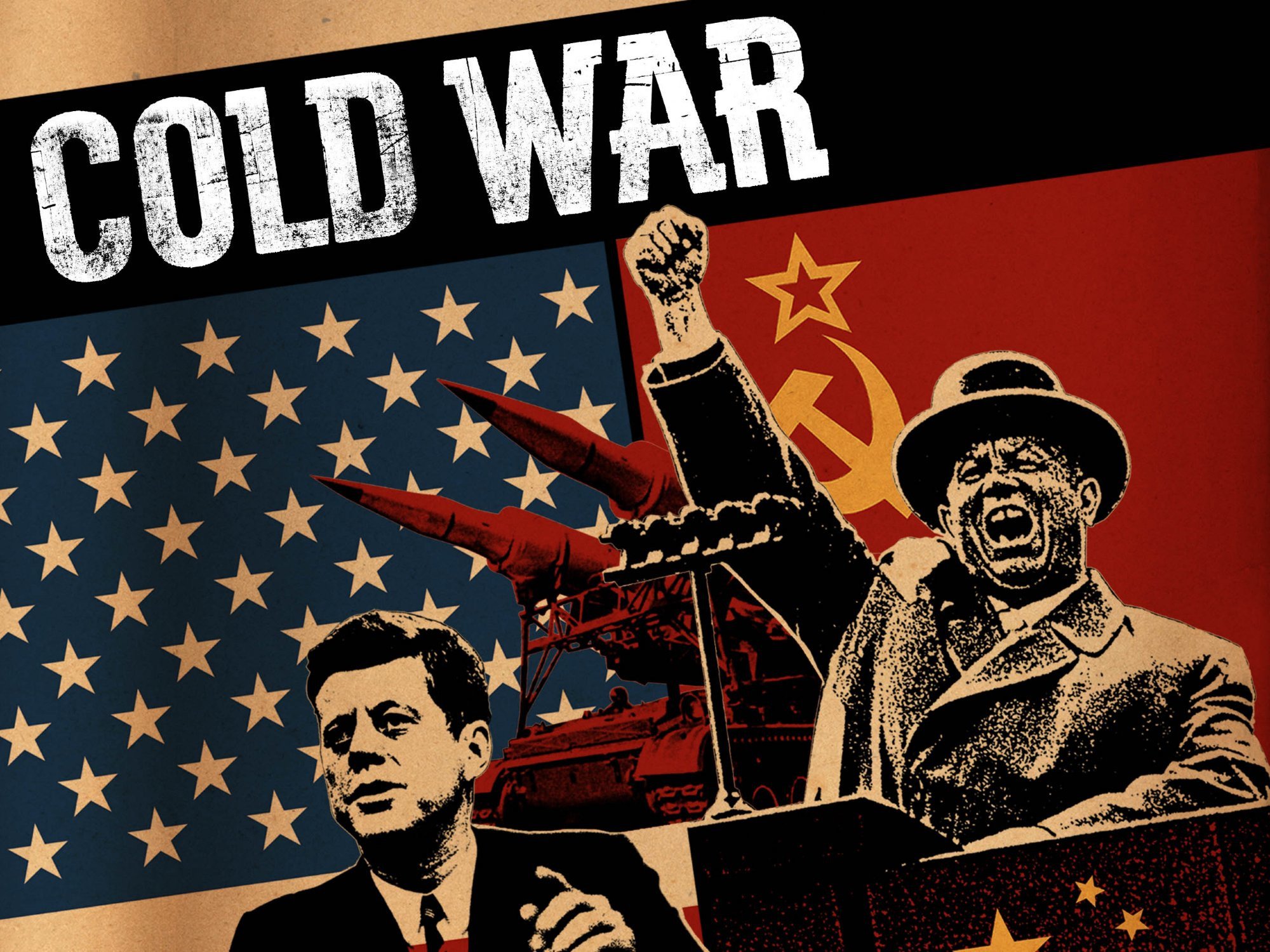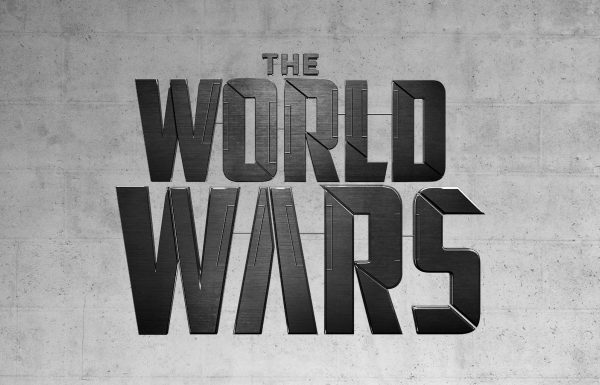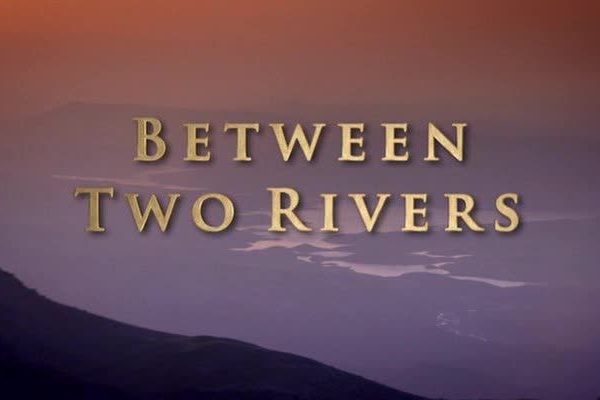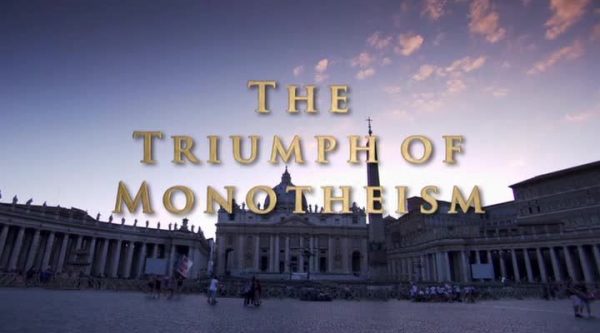Cold War episode 1 – Comrades 1917-1945: Though ideological enemies, the Soviet Union and the U.S. are allies against Hitler during WWII. At the end of the war, Europe is divided, and the one-time allies now confront each other. The U.S. has the atomic bomb. The Russian Revolution of 1917, followed by the Russian Civil War caused a rift between the Soviet Union and the United States. But when President Franklin Roosevelt took office in 1933, diplomatic and trade relations between the two countries resumed. The relationship was strained yet again after the USSR annexed the Baltic States and signed a non-aggression pact with Nazi Germany.
Despite their differences the Soviet Union and the United States found themselves allied after the German invasion of Russia in June 1941. As the war in Europe began to wind down and victory was in sight, the two countries had very different views as to what the post-war world would look like. At the Potsdam Conference, just before the atom bomb was dropped on Japan, it became clear that Stalin wanted to put Eastern Europe under the Soviet sphere of influence, setting the conditions for the Cold War to commence. Cold War Episode 1 includes interviews from George F. Kennan, Zoya Zarubina, Hugh Lunghi and George Elsey.
Cold War episode 1
For nearly five decades, individuals across the globe arose each morning, contemplating if it would be the day the world would cease to exist. Such was the reality for countless people caught in the midst of the Cold War, the battle of ideologies between the East and the West for global supremacy. This documentary delivers an all-encompassing, in-depth examination of the strife that unfolded between the United States and the Soviet Union, which split the world apart. COLD WAR narrates an epic tale on an intimate level, as seen through the eyes of over 500 witnesses, from politicians who shaped global affairs to ordinary men and women whose existence it either protected or endangered.
The series consists of twenty-four hour-long episodes that chronicle the myriad events, both significant and trivial, that contributed to the formation of the contemporary era. As a monumental historical documentation, COLD WAR contests the oversimplified notion of two superpowers teetering on the brink of a nuclear abyss. Over a million feet of film footage, captured or recovered and largely unseen by Western audiences, unveils the audacity, whimsy, and strategic brilliance of world leaders such as Kennedy, Khrushchev, Castro, Kissinger, and Gorbachev, along with their most trusted advisors. It highlights the importance of a cosmonaut and a U-2 pilot who briefly became household names, as well as events and concepts like Potsdam, Checkpoint Charlie, “Dr. Strangelove”, MAD, SALT, DMZ, and the complexities of international relations. Lastly, it features the accounts of an aging generation who, perhaps for the first and only time, share their experiences on the record.
Cold War episode 1 – Comrades 1917-1945
The Unlikely Alliance: U.S. and Soviet Union During World War II and the Birth of the Cold War
Despite being ideological adversaries, the United States and the Soviet Union found themselves fighting side by side against Adolf Hitler during World War II. As the war drew to a close, the once-allied powers faced off in a rapidly changing world, laying the groundwork for the ensuing Cold War. This article delves into the complex dynamics between these two superpowers throughout this critical period in history.
From Russian Revolution to the Resumption of Diplomatic Relations
The Russian Revolution in 1917 and the subsequent Russian Civil War led to a significant rift between the Soviet Union and the United States. This tense relationship began to thaw when President Franklin D. Roosevelt assumed office in 1933, leading to the renewal of diplomatic and trade relations between the two nations. However, the uneasy alliance was tested again when the USSR annexed the Baltic States and entered into a non-aggression pact with Nazi Germany.
United by a Common Enemy: The Axis Powers
In June 1941, the German invasion of Russia brought the United States and the Soviet Union together as allies against a common foe. As the war in Europe approached its conclusion and victory seemed imminent, both superpowers began to develop divergent visions for the post-war world order.
Potsdam Conference: The Catalyst for the Cold War episode 1
The Potsdam Conference, held just before the United States dropped the atomic bomb on Japan, highlighted the growing ideological divide between the former allies. It became evident that Soviet leader Joseph Stalin aimed to bring Eastern Europe under the Soviet sphere of influence, a move that set the stage for the Cold War.
Key Perspectives on the U.S.-Soviet Relationship
To gain a comprehensive understanding of the complex relationship between the United States and the Soviet Union during this pivotal era, it is essential to consider the firsthand accounts of key individuals:
- George F. Kennan: An American diplomat and historian who played a crucial role in shaping U.S. foreign policy towards the Soviet Union during the early years of the Cold War.
- Zoya Zarubina: A Soviet intelligence officer who served as a translator and courier during World War II, providing unique insight into the inner workings of the Soviet regime.
- Hugh Lunghi: A British officer who participated in the Potsdam Conference as an interpreter and offers a valuable perspective on the tensions between the former allies.
- George Elsey: An American naval officer and White House aide, who was privy to high-level discussions concerning the use of the atomic bomb and the evolution of U.S.-Soviet relations.
Conclusion: The Legacy of a Tumultuous Alliance
The alliance between the United States and the Soviet Union during World War II was a complex and uneasy partnership, forged in the face of a common enemy. As the war drew to a close, the seeds of the Cold War were sown, leading to a prolonged period of political and military tension between the two superpowers. Understanding this pivotal time in history provides valuable insight into the development of the modern world and the ongoing challenges in international relations.
In Cold War episode 1 – Comrades 1917-1945 you will find answers to this questions:
- How did the U.S. and Soviet Union become allies?
- What caused the rift between the Soviet Union and the United States?
- How did the Potsdam Conference lead to the Cold War?
- What was the role of George F. Kennan in U.S. foreign policy?
- How did the United States and Soviet Union differ in their post-war world visions?
- What were the key events leading to the Cold War?




